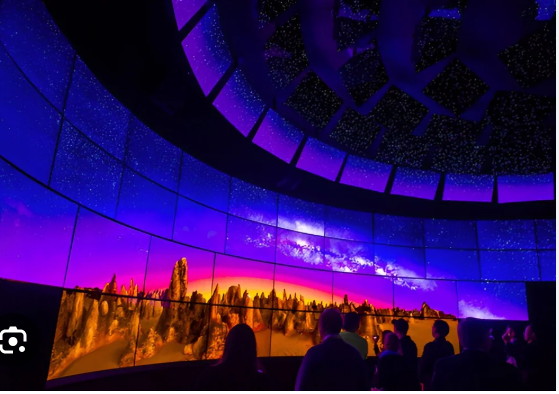Introduction
Digital technology has become an inseparable part of everyday life, and displays are at the heart of this transformation. Whether in smartphones, smartwatches, cars, or industrial equipment, the way information is presented has a direct impact on user experience. While rectangular screens have been the industry standard for decades, the round display has emerged as an innovative alternative. Its unique form provides not only aesthetic appeal but also practical benefits that make it suitable for various industries.
Evolution Of Display Technology
The journey of displays began with bulky cathode ray tubes, which were eventually replaced by thinner and more efficient liquid crystal displays. Over time, the demand for better visuals and compact designs gave rise to advanced display technologies, including OLED and AMOLED. Today, engineers are exploring new shapes and sizes to match the evolving needs of users, and the round display stands out as one of the most successful design innovations.
Why The Circular Design Matters
Unlike traditional rectangular screens, the round display challenges the norms of digital design. Its circular form is not just about style—it also provides ergonomic and functional advantages. The human eye often finds circular designs more natural, which makes the format intuitive in certain applications. This innovation allows technology to merge seamlessly with traditional forms such as dials, clocks, and gauges.
Use In Wearable Technology
One of the most popular uses of the round display is in wearable technology. Smartwatches and health trackers make excellent use of this format because it fits comfortably on the wrist. Beyond comfort, the circular design makes fitness tracking more engaging by using rings and progress indicators. It also enhances the visual appeal of wearable devices, making them look more like traditional watches while offering advanced digital functions.
Role In Automotive Interfaces
The automotive industry has rapidly adopted digital dashboards, replacing conventional mechanical gauges. A round display provides the perfect balance by maintaining the familiar look of analog meters while offering the versatility of digital technology. Speedometers, fuel meters, and navigation indicators can all be designed in a circular format, giving drivers a modern yet familiar interface that improves safety and ease of use.
Industrial And Commercial Benefits
In factories, laboratories, and control rooms, data visualization plays a crucial role in operations. A round display is often used for dials, pressure meters, and temperature gauges. Its intuitive layout makes it easier for workers to read and interpret information quickly, which can reduce mistakes and improve productivity. Many industrial systems are now integrating this design to provide efficiency alongside reliability.
Healthcare Applications
The medical field relies heavily on clear and accurate monitoring systems. Devices such as patient monitors, diagnostic tools, and wearable health sensors are beginning to integrate the round display to make readings more round display intuitive. Circular progress indicators for heart rate or oxygen levels, for example, are easier to understand at a glance. This design bridges the gap between traditional analog medical tools and modern digital systems.
Design And Aesthetic Advantages
The appeal of the round display goes beyond functionality. Its unique shape helps companies differentiate their products in a crowded market. Consumers are naturally drawn to devices that look different and innovative. From kitchen appliances to luxury gadgets, the circular screen adds a touch of sophistication and modernity that enhances brand identity.
Technical Challenges And Solutions
Engineering a round display is not without challenges. Unlike rectangular screens, these designs require precise pixel alignment and even backlighting across a circular surface. Manufacturers also need to ensure that touch response and durability are not compromised. However, advancements in display technology have made it possible to overcome these challenges, resulting in high-quality and reliable products.
Integration In Consumer Electronics
The round display is expanding beyond wearables and cars into everyday consumer electronics. Devices like smart home assistants, entertainment systems, and even futuristic household appliances are beginning to use this form. The integration of round screens not only improves usability but also enhances the overall visual design of these devices, making them more appealing to modern users.
Future Potential Of Round Displays
Looking ahead, the future of display technology is moving toward greater innovation in shapes and flexibility. Foldable and transparent screens are already in development, but the round display is likely to retain its relevance due to its adaptability. Its potential applications range from augmented reality devices to interactive smart home systems, ensuring it remains a vital part of the display industry.
Conclusion
The evolution of digital screens reflects the constant pursuit of innovation in technology. The round display is more than a design trend; it is a functional and aesthetic advancement that bridges tradition with modern technology. From wearables and vehicles to industrial systems and healthcare tools, its applications are vast and growing. As the demand for unique and user-friendly solutions continues, the circular format is set to remain an essential part of future screen designs.

